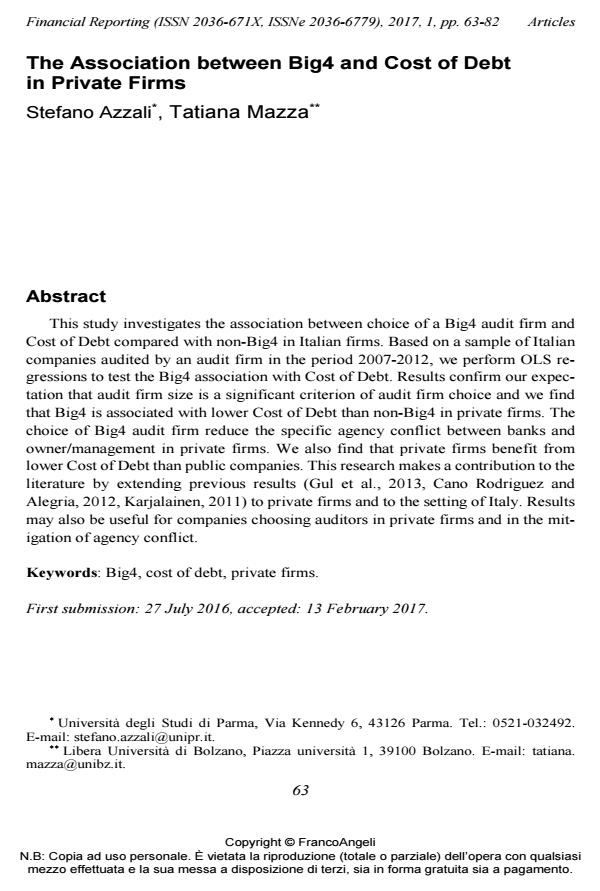The Association between Big4 and Cost of Debt in Private Firms
Titolo Rivista FINANCIAL REPORTING
Autori/Curatori Stefano Azzali, Tatiana Mazza
Anno di pubblicazione 2017 Fascicolo 2017/1
Lingua Inglese Numero pagine 20 P. 63-82 Dimensione file 263 KB
DOI 10.3280/FR2017-001003
Il DOI è il codice a barre della proprietà intellettuale: per saperne di più
clicca qui
Qui sotto puoi vedere in anteprima la prima pagina di questo articolo.
Se questo articolo ti interessa, lo puoi acquistare (e scaricare in formato pdf) seguendo le facili indicazioni per acquistare il download credit. Acquista Download Credits per scaricare questo Articolo in formato PDF

FrancoAngeli è membro della Publishers International Linking Association, Inc (PILA)associazione indipendente e non profit per facilitare (attraverso i servizi tecnologici implementati da CrossRef.org) l’accesso degli studiosi ai contenuti digitali nelle pubblicazioni professionali e scientifiche
This study investigates the association between choice of a Big4 audit firm and Cost of Debt compared with non-Big4 in Italian firms. Based on a sample of Italian companies audited by an audit firm in the period 2007-2012, we perform OLS regressions to test the Big4 association with Cost of Debt. Results confirm our expectation that audit firm size is a significant criterion of audit firm choice and we find that Big4 is associated with lower Cost of Debt than non-Big4 in private firms. The choice of Big4 audit firm reduce the specific agency conflict between banks and owner/management in private firms. We also find that private firms benefit from lower Cost of Debt than public companies. This research makes a contribution to the literature by extending previous results (Gul et al., 2013, Cano Rodriguez and Alegria, 2012, Karjalainen, 2011) to private firms and to the setting of Italy. Results may also be useful for companies choosing auditors in private firms and in the mitigation of agency conflict.
Parole chiave:Big4, cost of debt, private firms.
- The Italian depreciation suspension policy during the COVID-19 pandemic: consequences on private firms’ borrowing capacity Marco Maria Mattei, Matteo Merlo, Eleonora Monaco, in Accounting in Europe /2023 pp.166
DOI: 10.1080/17449480.2023.2174444
Stefano Azzali, Tatiana Mazza, The Association between Big4 and Cost of Debt in Private Firms in "FINANCIAL REPORTING" 1/2017, pp 63-82, DOI: 10.3280/FR2017-001003